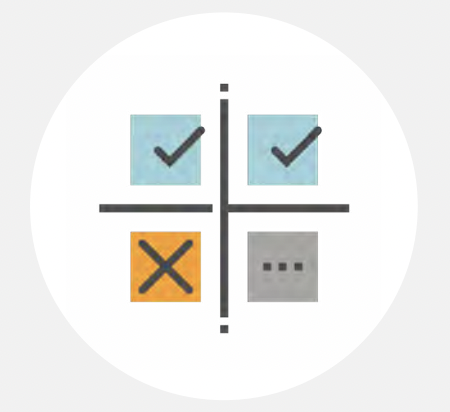Institutional effectiveness is not a new concept. The Society of Colleges and University Planning (SCUP) defines institutional effectiveness as “a higher education institution’s effort to organize evaluation, assessment, and improvement initiatives so the institution can determine how well it is fulfilling its mission and achieving its goals.” Leaders across years and institutions have recognized its value, leading them to create their own institutional effectiveness plans and employ innovative leaders to make them a reality. The concept has endured because of its timeless purpose: to create a holistic view of the various programs, policies, and key players of an institution in order to evaluate its success and achieve its’ mission.
And yet, institutional effectiveness for many has remained elusive. Institutions have a vision but face many challenges in achieving their goals. Why?
3 Challenges of Strategic Planning in Higher Education
The answer lies with institutional effectiveness’s close cousin: strategic planning. It turns out the two have a lot in common. In the Chronicle of Higher Education article, “The Truth About Strategic Plans,” author Lee Gardner describes the challenges that make it difficult for stakeholders to rally around a college’s strategic plan. These challenges can be distilled into 3 key themes, and mirror the same challenges encountered in trying to implement institutional effectiveness.
 Decentralized or insular decision-making
Decentralized or insular decision-making
Often, strategic planning in higher ed is developed by a small group of leaders and then disseminated into the community. But that insular decision-making can make community members feel like they don’t have a say in the college’s future. And if that small group of decision-makers lack insight into key departments or functions, this could result in a plan that does not capture all of the needs—or potential—of the institution.
 Failure to make connections between investments and outcomes
Failure to make connections between investments and outcomes
Campus leaders may not clearly communicate the purpose and the goals of a particular project or change, which can make community members wary. “A plan can be undermined if members of the broader campus community can’t see how their work relates to strategic goals,” notes Felecia Commodore, an assistant professor of higher education at Old Dominion University. “That expensive new campus construction project, for example, might get less pushback if its larger purpose were clearer.”
Lack of metrics, or an inability to define success
Finally, a lack of metrics (or a lack of transparency around metrics) during strategic planning can also hinder implementation. Stakeholders need to know what they are striving for, and how to know when they’ve fallen short. “Without specific goals, such as raising the graduation rate by X percentage points or increasing the endowment by Y dollars,” says Rob Zinkan, RHB vice president, “employees don’t begin to get that clarity to know, as a member of this university or college community, what am I supposed to do differently than I’m doing today?”
Improve Strategic Planning with Institutional Performance Management
Faced with these challenges in strategic planning, higher ed leaders often have to make decisions under less than ideal circumstances. Choices are based on assumptions and potentially skewed or siloed datasets, resulting in flawed outcomes which can dramatically impact an institution’s long-term success. In conjunction with the growing pressures higher ed is facing today - enrollment volatility, financial constraints, regulation shifts, and many more - institutions need to embrace a new approach to strategic planning if they want to overcome these challenges and improve institutional effectiveness.
Institutional Performance Management is a discipline borrowed from the most successful institutions. It provides a methodological approach to answering critical questions using data, allowing you to overcome insular decision-making, make connections, and ensure you (and your stakeholders) know what success looks like holistically on your campus. It works because it is grounded in recognizing the interconnectedness of mission, student outcomes and financial sustainability — a mindset institutions need to adopt to ensure long-term success.
Learn more about Institutional Performance Management and overcome the challenges impacting your strategic plan.

